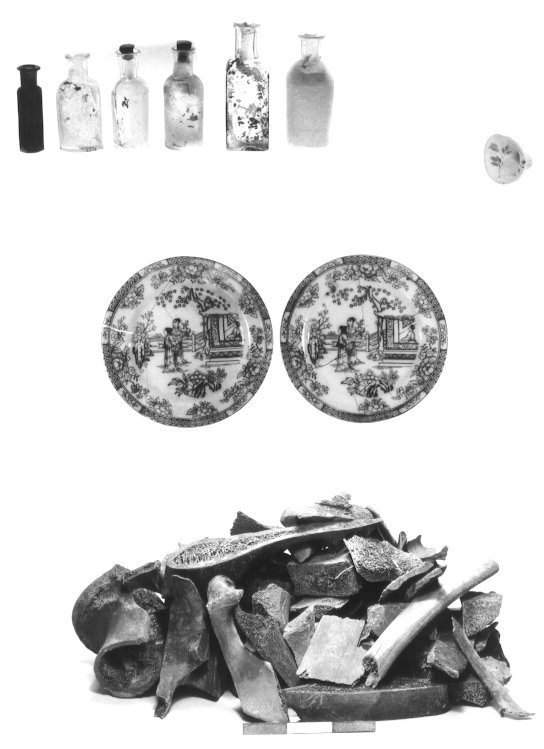Urban Archaelogoy
Today, history in a trash bin. The University of Houston's College of Engineering presents this series about the machines that make our civilization run, and the people whose ingenuity created them.
Since waste removal is a universal issue in our lives, anthropologists use it to answer a question any historian inevitably asks: "What was the texture of life in some other age? How did people spend their days in ancient Rome or in a medieval castle?" Or, in this case, "What was it like in antebellum Galveston?"
Inland Texas life was primitive, but Galveston was a major port -- a window on a larger world, possessed of some grace and elegance. Yet we gain one of our best views of Galveston's wealthy from a most unexpected part of a grand home called Ashton Villa.
Ashton Villa is one of the few mansions that survived the terrible 1900 hurricane. It was built by James Brown, a wealthy businessman and slaveholder before the Civil War. The home is very well made, probably because he used the work of slave craftsmen instead of manufactured materièl.
Urban archaeologists Texas Anderson and Roger Moore have extracted its story from an old privy, long since covered over and forgotten. More than an outhouse, this was also a general trash dump. This huge hole in the ground, no longer septic, contains layers of trash. They reveal the quality of life from the 1850s all through the Victorian era.
Galveston rode out the Civil War better than most of the South, and so did Brown. After the war, he furnished the house with fine European porcelain. His family ate inch-thick T-bone and porterhouse steaks; they disdained chicken and pork. They used elegant wines and cognacs, but not hard liquor. The ladies imported French perfume and expensive facial astringents. Brown's business involved selling new technology to the American West. His mansion displayed all the latest stuff: the first flush toilets in Galveston -- the first electric lights.
Sifting through the century-old detritus, we begin to sense the finery and feel of the place and to know the actual people. We begin to understand the combined tyranny and vision that Brown represented. To say merely that Brown exploited slaves, or that he brought technology to the West, is like trying to know baseball only by reading sports-page statistics.
The intimacy of an accurate look into the drawing room, or the servants' quarters, is understanding of a whole different order. And we gain that understanding when we have the wits to look at it through a trash heap. History is thus revealed where history is made. History is found, not in the drawing room, but in the lowest common denominators of our existence. George Eliot captured that fact wonderfully well when she wrote,
If we had a keen vision of all that is ordinary in human life, it would be like hearing the grass grow or the squirrel's heart beat, and we should die of that roar which is the other side of silence.
I'm John Lienhard, at the University of Houston, where we're interested in the way inventive minds work.
(Theme music)
I am very grateful to Texas Anderson for her counsel on this episode.
The quote from George Sand is from Middlemarch, Chapter 20.
This is a greatly revised version of Episode 130.

Ashton Villa. Note how the ground has been raised almost to the level of the front porch
Photo by John Lienhard

How they cut up beef at Ashton Villa
Click on the thumbnail for a full size image.
Details of various items taken from the old privy
